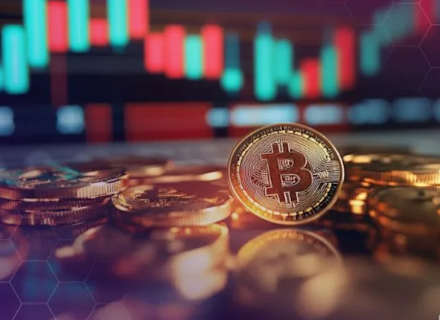Navigating the Fed's September Rate Cut: Timing, Impact, and the Shadow of Political Pressures
- Fed's 2025 September meeting faces pressure to cut rates amid 2.1% inflation vs. 2% target and 1.4% GDP growth. - Political tensions rise as Trump administration criticizes Fed independence through tariff policies and personnel disputes. - Market anticipates 25bp rate cut (82% probability) but fears politicization could undermine central bank credibility. - Investors advised to prioritize quality equities and short-term bonds amid inflation risks from persistent tariffs.
The Federal Reserve's September 2025 meeting has become a focal point for investors, as the central bank weighs the delicate balance between inflation control and economic growth. With a 25 basis point rate cut priced in at 82% probability, the market's expectations reflect a cautious optimism. Yet, beneath this surface lies a complex interplay of economic fundamentals and political pressures that demand closer scrutiny.
The Fed's Dilemma: Economic Caution or Political Constraints?
The Federal Open Market Committee (FOMC) faces a dual challenge. On one hand, inflation remains stubbornly above the 2% target, with tariffs driving goods price inflation higher. On the other, the labor market, though resilient, shows signs of strain, and real GDP growth has slowed to a tepid 1.4% in 2025. The FOMC's June 2025 projections suggest a gradual decline in inflation to 2% by 2027, but the path is fraught with uncertainty.
The slow pace of easing—projected to reduce the federal funds rate from 4.3% to 3.9% in September—has sparked debate. Is this measured approach a reflection of genuine economic caution, or is it a response to political constraints? The Trump administration's aggressive tariff policies and public pressure on the Fed to cut rates have introduced a layer of politicization unprecedented in recent decades. The attempted removal of Federal Reserve Governor Lisa Cook and the administration's open criticism of Chair Jerome Powell signal a broader strategy to reshape the Fed's independence.
While the Fed's structural safeguards—14-year staggered terms for governors and the inclusion of Reserve Bank presidents on the FOMC—remain intact, the perception of political influence could erode market confidence. If investors begin to doubt the Fed's ability to act solely on economic data, long-term interest rates and inflation expectations may rise, undermining the central bank's credibility.
Market Reactions: Equity and Fixed-Income Portfolios in the Crosshairs
The September rate cut, if executed, is likely to provide a short-term boost to equity markets. Historically, rate cuts have supported risk assets by lowering borrowing costs and stimulating corporate earnings. However, the current context is different. The Fed's delayed response to inflationary pressures from tariffs and fiscal expansion means that the benefits of easing may be offset by persistent inflation risks.
For equity investors, the key question is whether the Fed's actions will be seen as effective or merely reactive. A shallow easing cycle—characterized by a single 25 basis point cut in September and limited further reductions—could leave markets underwhelmed. Sectors sensitive to interest rates, such as real estate and utilities, may benefit, but cyclical industries like industrials and consumer discretionary could face headwinds if inflation persists.
Fixed-income markets, meanwhile, are bracing for a mixed outlook. A rate cut would typically drive bond prices higher, but the Fed's credibility is at stake. If investors fear that political pressures will force the Fed to ease more aggressively than warranted by economic data, inflation expectations could rise, pushing Treasury yields higher.
Strategic Positioning for Uncertainty
Given the Fed's constrained policy space and the risks of premature easing, investors should adopt a balanced approach. Equity portfolios should prioritize quality over growth, favoring companies with strong balance sheets and pricing power to navigate inflationary pressures. Defensive sectors like healthcare and consumer staples may offer stability, while short-term Treasury allocations can hedge against volatility.
For fixed-income investors, a laddered approach to maturities can mitigate interest rate risk. Short-term bonds, less sensitive to rate changes, may outperform in a shallow easing cycle. Additionally, inflation-linked securities (TIPS) could provide a hedge against unexpected inflation, particularly if tariffs continue to distort price trends.
Conclusion: A Test of Resilience
The September 2025 rate cut is more than a monetary policy adjustment—it is a test of the Fed's institutional resilience. While the central bank's independence remains legally protected, the political pressures of 2025 have introduced a new dimension of uncertainty. Investors must navigate this environment with caution, balancing the immediate benefits of rate cuts against the long-term risks of eroded policy credibility. In a world where economic fundamentals and political dynamics are increasingly intertwined, adaptability will be the key to preserving capital and capturing value.
Disclaimer: The content of this article solely reflects the author's opinion and does not represent the platform in any capacity. This article is not intended to serve as a reference for making investment decisions.
You may also like
Mars Morning News | SEC Expected to Issue "Innovation Exemptions" for the Crypto Industry in "About a Month"
The SEC is expected to issue an innovation exemption for the crypto industry. The UK "Digital Assets and Other Property Act" has come into effect. BlackRock's CEO revealed that sovereign wealth funds are buying bitcoin. Bank of America recommends clients allocate to crypto assets. Bitcoin selling pressure is nearing its end. Summary generated by Mars AI. The accuracy and completeness of this summary are still being improved as the Mars AI model continues to iterate.

a16z: Inefficient governance and dormant tokens pose a more severe quantum threat to BTC.
Deep Reflection: I Wasted Eight Years in the Crypto Industry
In recent days, an article titled "I Wasted Eight Years in the Crypto Industry" has garnered over a million views and widespread resonance on Twitter, directly addressing the gambling nature and nihilistic tendencies of cryptocurrencies. ChainCatcher now translates this article for further discussion and exchange.
